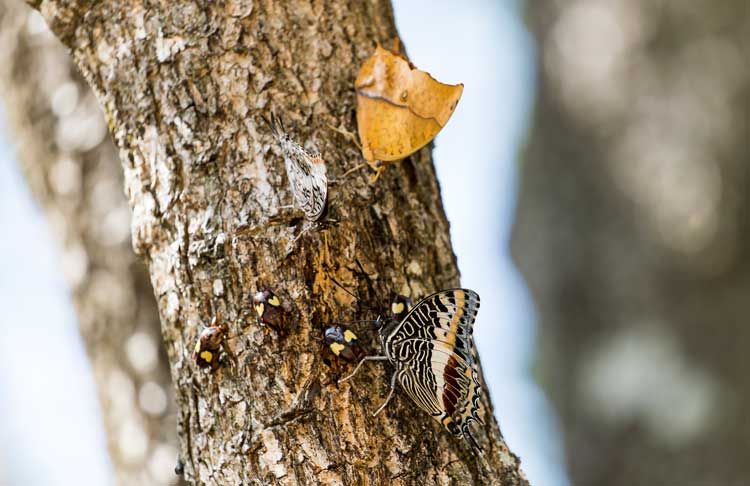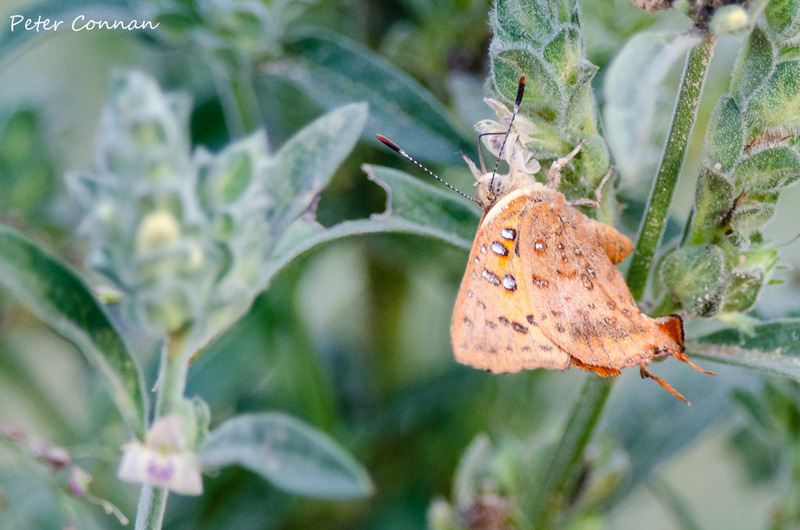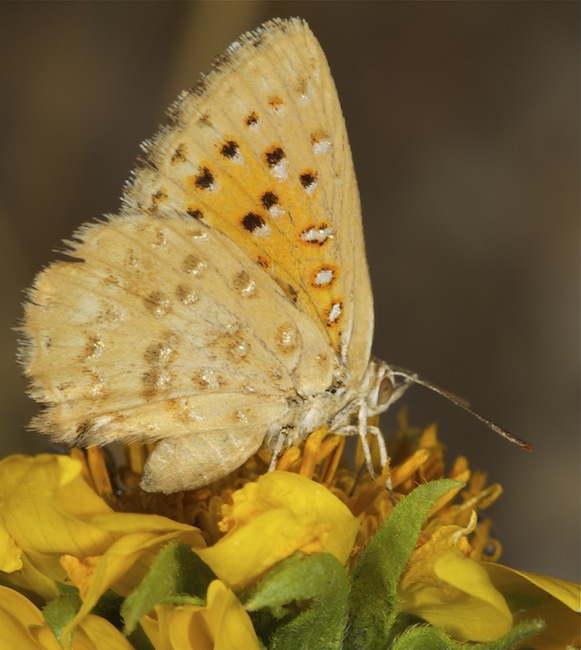Common Zebra Blue Leptotes pirithous pirithous
Family: Lycaenidae. Subfamily: Polyommatinae. Tribe: Polyommatini
Leptotes piriththous.jpg
Kruger National Park © ExFmem
Zebra Blues (Genus Leptotes)
There are four species of Zebra Blue found in South Africa that are identical on the wing surfaces. The only way to tell them apart is by inspection of the male genitalia under a strong lens. This is seldom convenient, and it has the disadvantage of killing the specimen. DNA is the only way to tell the females apart.
Although the great majority are most likely to be the Common Zebra Blue.
 Description
Description
Wingspan: ♂ 21–29 mm ♀ 24–30 mm.
Common Zebra Blue males are plain blue on the upperside and females have a pattern of grey spots and bands on a white and blue ground.
The underside has a distinctive pattern of irregular white-edged dark grey blotches and bands on a paler grey ground. The only butterfly that can easily be confused with it is the much rarer Sesbania Zebra Blue
Leptotes pulchra pulchra, which has a paler underside ground colour.
Distribution
Sub-Saharan Africa, including Senegal, Gambia, Guinea-Bissau, Guinea, Sierra Leone, Liberia, Ivory Coast, Burkina Faso, Ghana, Togo, Benin (throughout), Nigeria, Niger, Cameroon, Equatorial Guinea (Bioko), Sao Tome & Principe (Principe), Gabon, Angola, Central African Republic, Uganda, Kenya, Tanzania, Zambia (widespread), Mozambique, Zimbabwe, Botswana, Namibia, South Africa (Limpopo Province, Mpumalanga, North West Province, Gauteng, Free State Province, KwaZulu-Natal, Eastern Cape Province, Western Cape Province, Northern Cape Province), Eswatini. Also in Arabia (south-western Saudi Arabia, Yemen, Oman), Madagascar, Mauritius, Reunion, Rodrigues, Seychelles.
Extralimital in North Africa and Europe.
Habitat
Common and widespread throughout South Africa in all biomes; absent only from the highest mountains.
Biology
Foodplants: Larvae feed on
Plumbargo.
Flight period: Year-round in warmer areas, Oct–Mar in cooler areas.
Links:
http://metamorphosis.org.za/articlesPDF ... cudder.pdf
https://le.kloofconservancy.org.za/suff ... the-blues/
Leptotes piriththous pirithous.jpg
 © Pumbaa
© Pumbaa


 © nan
© nan © nan
© nan
 © ExFmem
© ExFmem